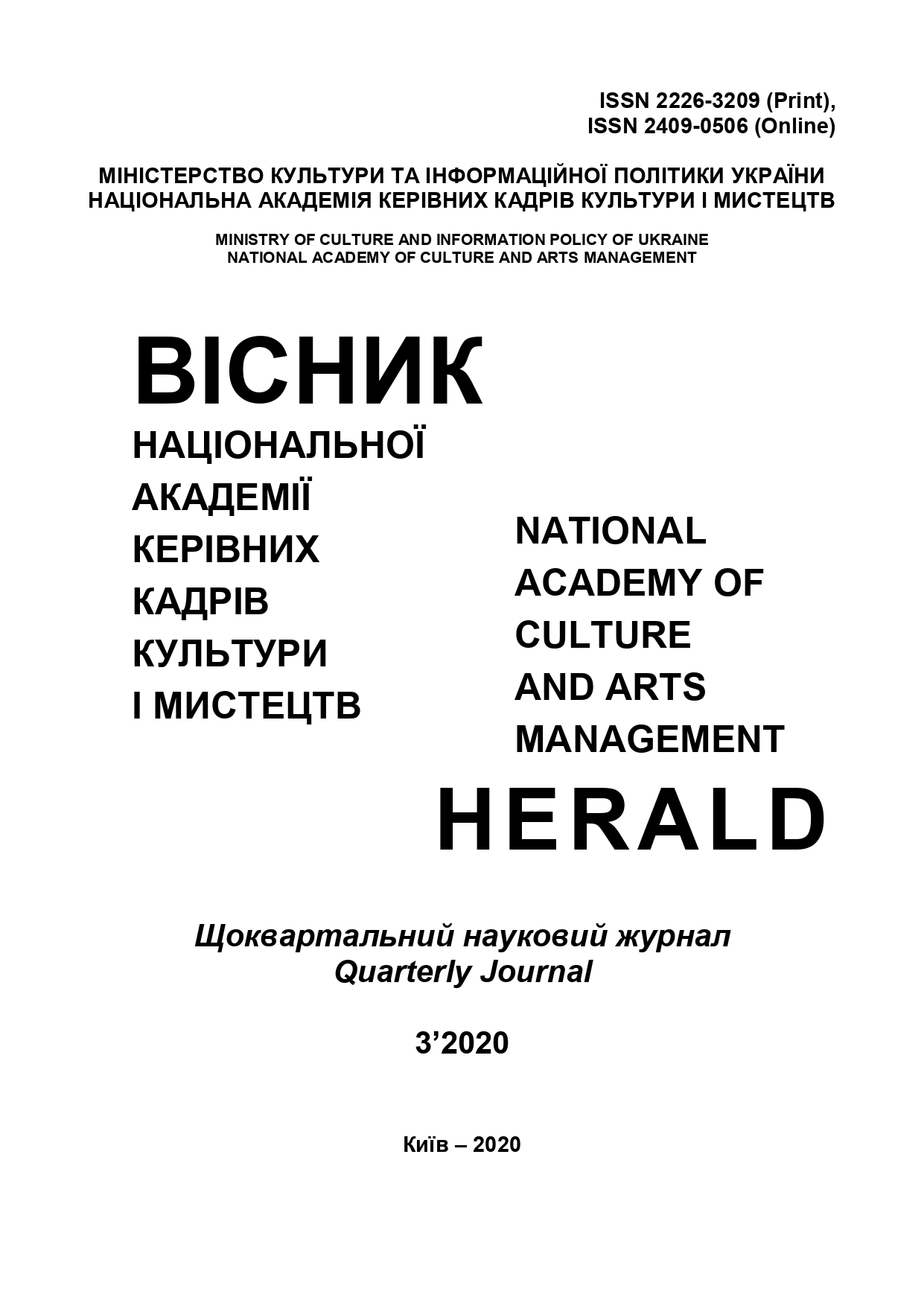Концептуальні засади розвитку художніх прикрас в Європі 1960-1980-х років
Conceptual Basis of Art Jewelry Development in Europe in the 1960-1980s
Author(s): Marta KravchenkoSubject(s): Visual Arts, Post-War period (1950 - 1989), Marketing / Advertising, Sociology of Art
Published by: Національна академія керівних кадрів культури і мистецтв
Keywords: adornments; art jewelry; alternative materials; concepts; creativity;
Summary/Abstract: The purpose of the article deals with the analysis of art jewelry formation in Europe, in particular the UK, the Netherlands, and Germany in the 1960-1980s. The representatives of these countries had their own traits and character, due to the specificity of the cultural environment. The methodology is based on a combination of historical and systemic approaches that have become an integral set of all the selected methods, as well as the methods of comparative, system-comparative, and art criticism analyses. The scientific novelty of the study is in the highlighting of the peculiarity of jewelry evolution in Europe in the 1960-1980s, which is associated with the emergence of new conceptual foundations of creation: the use of different materials - from expensive to alternative, new aesthetic and conceptual forms, which is considered as an independent artistic phenomenon for the first time. Conclusions. The deviation of adornments from classic jewelry and the establishment of their independent aesthetic role in the system of applied art is accompanied by an active creative experiment in the countries of Europe from the 1960s to the early 1980s. From then on, main conceptual foundations are being formed: the change of art jewelry interpretation paradigm as the work of art on the verge of decorative and visual arts; experiments with art jewelry in the practical and theoretical context; the use of non-traditional materials.
Journal: Вісник Національної академії керівних кадрів культури і мистецтв
- Issue Year: 2020
- Issue No: 3
- Page Range: 77-82
- Page Count: 6
- Language: Ukrainian

